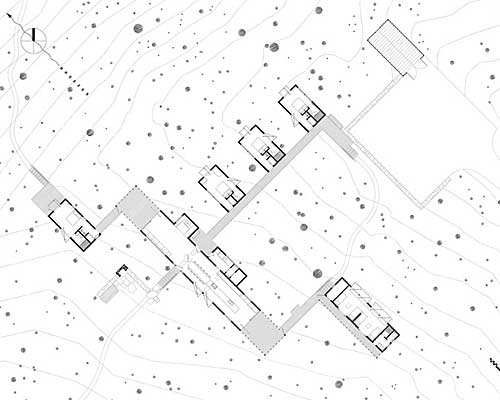Hunt County, Texas
By Ingrid Spencer-via:archrecord
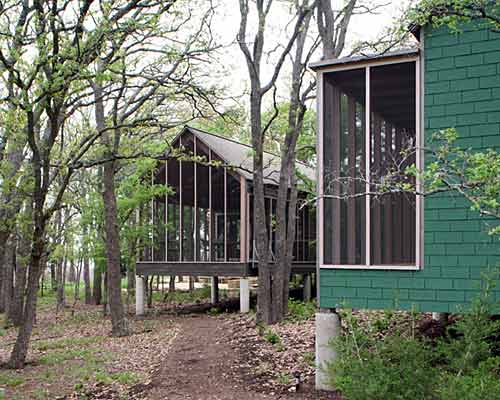
Photo: © Charles D. Smith
Garrett Boone, founder and chairman of the board of The Container Store, has traveled the world and seen much great architecture. But it was his stay in an architect-converted barn outside Frankfurt, Germany that made him realize he had never actually owned and lived in an inspiring home. “I had memorized the Yeats poem The Lake Isle of Innisfree as a boy,” he says, “and that poem sums up what I realized I was looking for—a place to find peace and to feel truly inspired. That barn in Germany really opened my eyes to that fact.”
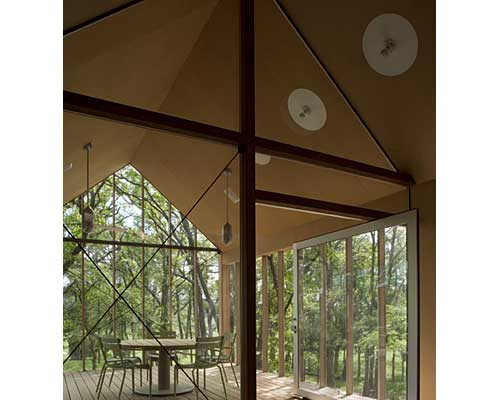
Photo: © Charles D. Smith
The Boones, who have three grown children and spend most of their time in Dallas, had purchased a heavily wooded five-acre plot in East Texas, on the eastern shore of Lake Tawakoni. It was there that they decided to have their own Innisfree built, and they hired Max Levy, FAIA, of Dallas-based Max Levy Architect, to design it. Levy, known for his small, hands-on practice and carefully crafted Modernist designs, says that the program called for a 3,000-square-foot house with some kind of communion with the outside spaces. “I realized that the best way for us to build a house on this beautiful site without cutting down trees or hurting the land too much was to build a series of small buildings rather than one big one,” says Levy. The Boones agreed to the idea, and Levy took the plan several steps further. “Another way to kill trees is to dig a foundation,” he says. “To keep this house resting lightly on the land we used 12-inch diameter concrete piers. It’s the first house I’ve ever done with absolutely no site grading. We ended up cutting down only one tree.” 
Photo: © Charles D. Smith
Connected by an Ipe-wood elevated boardwalk, the compound comprises seven separate buildings—the main kitchen/dining/living area with screened porch, a master suite, three guest bedroom buildings, a bunkhouse, and a boathouse. Oriented with breezes in mind (“The buildings are like a school of fish,” says Levy, “all facing toward the current.”), each building is its own private sanctuary. While each little structure takes the form of an elementary gabled box, the interest lies in the details, such as the windows, which Levy calls “breeze structures.” Mesh boxes constructed of aluminum tubing and insect screens protrude from each building at varying heights, allowing the windows to swing out. While the buildings use a geothermal heating and cooling system, Levy notes that this is not the greenest aspect of the project. “The idea isn’t how to make the heating and cooling more efficient,” he says, “it’s to figure out ways to turn the damn thing off. For this project, even in the heat of the Texas summer, the owners seldom have to turn on the AC. It’s the height of the ceilings, the orientation, the shade of the woods, and the breeze structures that do it.” 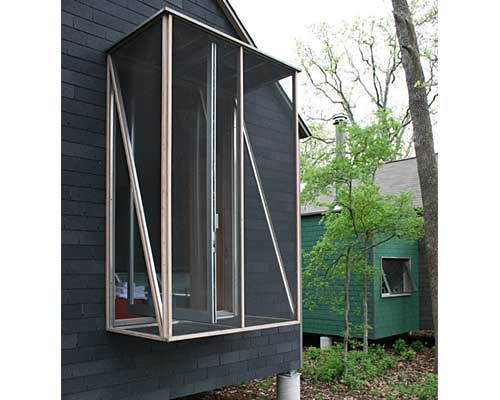
Photo: © Charles D. Smith
While the Boones were keen on the idea of the separate structures, they weren’t so sure about the cladding Levy chose for each building—three-tab composition shingles, in colors sympathetic to the surroundings, including green, black, and gray. “I don’t blame them for being skeptical about the shingles,” says Levy. “They’re literally the cheapest roofing you can get, and are usually seen on the roofs of horrible suburban builder houses. But, they are maintenance free, and they actually come in some nice colors. It’s like architectural camo—the little buildings are hidden in the trees.” Levy used other inexpensive materials throughout the project, including industrial fans, MDF interior cladding, battleship linoleum (“That’s the greenest stuff around,” says Levy, “and it’s coming back in fashion”), aluminum storefront windows and doors, and silver-bowl light bulbs with white vinyl disks on the wall behind them to reflect light. Industrial pendant lighting was also used in the kitchen and dining areas. 
Photo: © Charles D. Smith
The 1,200-square-foot main building, where the kitchen and dining areas are located, boasts built-in window seating and storage, a 37-foot-long island, and a wood burning stove, behind which the Keats poem is inscribed. “There’s a spiritual quality to this place,” says Garrett Boone. His wife Cecilia agrees. “It’s got spaces where you can just sit and be, places for solitude. And then there’s the conviviality of the warm and informal cooking area.” The house has changed their lives for the better in more ways than one. They’re ready to give up their house in Dallas, with its acre plot, and purchase a condominium to use as a pied-a-terre. “Why would we need any other outside space than this?” asks Garrett. 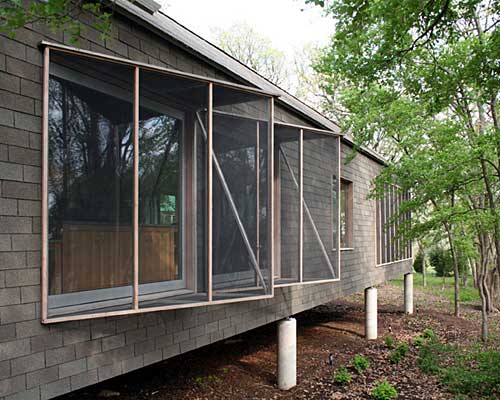
Photo: © Charles D. Smith
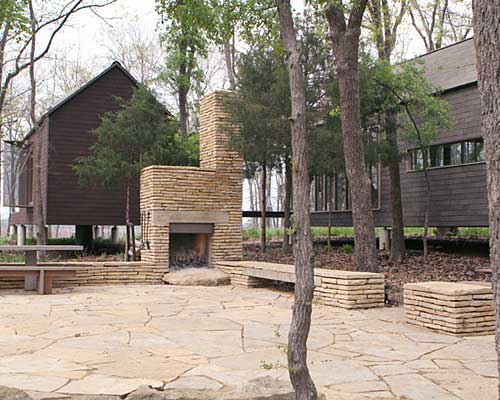
Photo: © Charles D. Smith
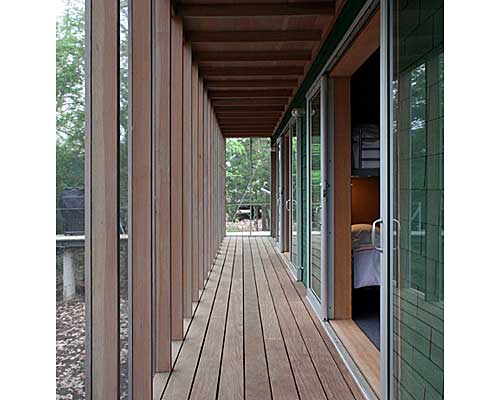
Photo: © Charles D. Smith
